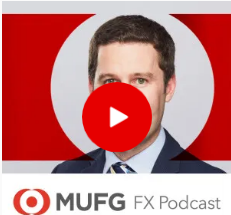Will G10 central bank updates trigger a pick-up in FX volatility?
JPY: USD/JPY rises up closer to 150.00-level ahead of BoJ policy meeting
The major currency rates have remained stable overnight ahead of a busy week of G10 central bank updates. The RBA and the BoJ will be the first G10 central banks to holding their policy meetings tomorrow followed by the Fed on Wednesday, and then the SNB, Norges Bank and Bank of England on Thursday. The heavy schedule of G10 central bank updates has the potential to trigger at least a temporary pick-up in foreign exchange volatility in the week ahead from close to year to date lows at the end of last week. The latest policy updates from the BoJ and the Fed will attract the most market attention. Ahead of tomorrow’s BoJ policy update, USD/JPY has risen back up closer to the 150.00-level despite building speculation that the BoJ could announce an exit from loose policy settings after stronger wage negotiation results last week. According to Bloomberg, the OIS market in Japan is currently pricing in around 6bps of hikes from the BoJ at tomorrow’s policy meeting. The announcement at the end of last week from the Japanese Trade Union Confederation (Rengo) that unions had secured an average total pay hike of 5.28% in their preliminary results has further increased the likelihood that the BoJ will begin tightening monetary policy at tomorrow’s meeting rather than waiting until April.
We are expecting the BoJ to tighten monetary policy next week by outlining the following policy steps: i) Abolition of negative interest rates, ii) Termination of Yield Curve Control (YCC) and clarification of new government bond purchase policy, iii) Elimination of asset purchase limits for ETFs, etc, and iv) Withdrawal of the overshoot-type inflation commitment. Firstly, we expect the BoJ to abandon the three-tiered structure for current account balances that was introduced to help reduce the negative impact of Japanese banks’ profitability from negative rate policy. The BoJ will return to paying +0.1% interest on the excess reserves of the BoJ’s current account holders, and to guide the uncollaterialized overnight call rate into a higher range between 0.00% and 0.10%. In effect it would equate to around a 10bps rate hike from the BoJ.
Secondly, we expect the BoJ to bring an end to YCC after already watering down the cap on the 1.00% 10-year JGB yield last year. However we expect the BoJ to provide reassurance that it will continue to purchase a significant amount of JGBs even after YCC is brought to an end. One option that has been touted in the media would be for the BoJ to pre-commit to a monthly pace of JGB purchases. Jiji Press reported that the initial monthly pace could be set at around JPY6 trillion which would be similar to the amount of purchases in February. Thirdly, we expect the BoJ to end purchases of equity ETFs and corporate debt. Fourthly, we expect the BoJ remove their inflation “overshoot commitment” that states they will continue expanding the monetary base until inflation exceeds 2.0% and stays above target in a stable manner.
We believe these upcoming policy changes have been well telegraphed and are designed to enable a smoother transition away from the exceptionally loose policy settings that have been in place in Japan. It should help to ease market disruption in the near-term. Without a sharp adjustment higher for yields in Japan in the week ahead, it is difficult to see the JPY strengthening significantly even as the BoJ ends negative rates and YCC. Indeed, price action over the week past suggests that market participants may already be anticipating that the JPY could weaken further once the event risk is out of the way next week. Market participants are assuming that the BoJ accompanies policy changes with cautious guidance that dampens speculation over further policy tightening through the rest of this year. Yields in Japan are expected to remain low even after next week’s BoJ policy meeting leaving the JPY as an attractive funding currency for carry trades that are benefitting from low volatility at the start of this year.
The BoJ would have to deliver a hawkish policy surprise to trigger a squeeze of elevated short JPY positions. Potential triggers include: i) forward rate guidance that encourages market participants to price in the policy rate rising beyond 0.25% by the end of this year and ii) the BoJ indicating more flexibility to slow down the pace of JGB purchases alongside ending QT that could put upward pressure on long-term yields. In these circumstances, we are not convinced that this week’s BoJ’s policy meeting will prove to be a decisive turning point for the JPY even as we expect NIRP and YCC to end. The BoJ would have to signal more confidence that policy needs to be tightened further to trigger a stronger JPY. Please see our latest FX Weekly report for more details (click here).
USD/JPY VS. CARRY ATTRACTIVENESS RATIO

Source: Bloomberg, Macrobond & MUFG GMR
USD: Will the Fed provide a more hawkish policy update this week?
One important reason why USD/JPY has rebounded back up from just above the 140.00-level at the end of last year and is moving back closer to the 150.00-level this week has been the hawkish repricing in the US rate market. The yield on the 2-year US Treasury bond has increased by around 60bps since the low point in January driven by the paring back of Fed rate cut expectations. It leaves the US rate market currently pricing in around 75bps of cuts in total by the end of this year. The timing of the first rate cut is still expected to be in June but it is now judged to be less of a done deal. There are currently 16bps of cuts priced in by the June FOMC meeting which equates to just less than a 2 in 3 probability of a cut. The main trigger for the reversal of the USD’s recent weakening trend has been more evidence that US inflation is proving stronger than expected at the start of this year. The releases of the US CPI and PPI reports for the February have both surprised to the upside for the second consecutive month providing more of a challenge to market expectations that the Fed will begin to cut rates as early as in June. Market participants are understandably wary that the Fed’s latest policy update this week could prove to be relatively more hawkish at least acknowledging that recent progress to meet their inflation target has been disappointing.
The Fed’s updated projections for the policy rate and economic outlook will be updated at this week’s FOMC meeting. We are expecting the updated projections to remain largely unchanged compared to at the December FOMC meeting. The median dot from back in December revealed that the Fed favoured cutting rates three times this year. However, looking back at the dispersion of the dots reveals that it would take just two participants to change from three cuts to two for the median dot to move to a total of two cuts this year. It poses the main upside risk for the USD in the week ahead should it encourage the US rate market to further scale back Fed rate cut expectations. US rate market pricing is currently aligned with the Fed’s projections from back in December for three cuts by the end of this year. The dollar index is currently trading just below resistance form the 200-day moving average at around 103.70.
KEY RELEASES AND EVENTS
|
Country |
GMT |
Indicator/Event |
Period |
Consensus |
Previous |
Mkt Moving |
|
EC |
10:00 |
CPI (YoY) |
Feb |
2.6% |
2.8% |
!!! |
|
EC |
10:00 |
Trade Balance |
Jan |
-- |
16.8B |
!! |
|
US |
14:00 |
NAHB Housing Market Index |
Mar |
48 |
48 |
! |
Source: Bloomberg



